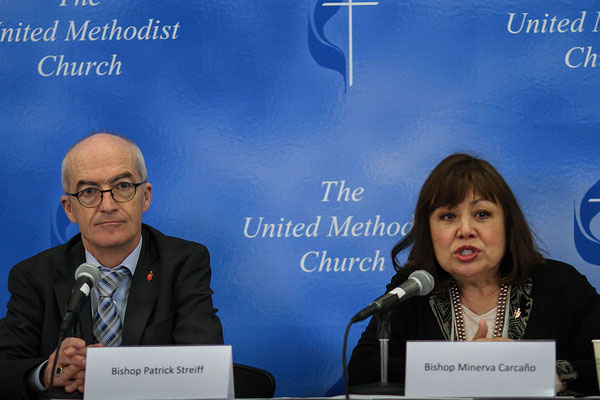You may know people in your life who seem to lose themselves in relationships. Their personalities and opinions morph depending on the group with whom they find themselves.
We may also know others who insist on being rugged individualists. They find themselves in the proximity of others, but choose to be guarded and never really connect with the group.
Healthy people are able both to remain themselves and connect with a community.
Designed for community
In the Genesis 2 story of Creation, we read about God forming a specific human being out of the soil of the earth. Other matter is created en masse. For example, we read that God grew every beautiful tree—not one tree, but all of them. Human beings, however, are created uniquely, one at a time.
Later in the story, God notices the first human is alone and this is not good. God creates animals to form community with the human, but the loneliness remains.
Finally, God creates another human—another specific, unique human being—and the first community is born. Both were created individually. Both were created to be different. Both also were created to be together.
The United Methodist Church is a global denomination—a community of individuals from across the world. We speak a variety of languages, and live in different cultures.
At General Conference on Wednesday, May 11, our desire as The United Methodist Church to be a community of individuals was the centerpiece of the day.
Through the initial gatherings of the Conference, it has been beautiful to see our individuality on display. Worship, for example, has been rich with a variety of languages and cultural expressions of praise, thanksgiving, and celebration.
Through the use of technology and a wonderful, talented corps of translators, all delegates are able speak and hear at General Conference in their native language. We are a beautiful gathering of unique individual parts.

Bishop Streiff and Bishop Carcaño share their work on the World Wide Nature of the Church. Photo by Maile Bradfield, United Methodist Communications.
The World Wide Nature of the Church
Yesterday, Bishop Minerva Carcaño and Bishop Patrick Streiff shared in a press conference about the World Wide Nature of the Church. The bishops shared the challenge of determining what in our Discipline is essential for all United Methodists to adhere to, and what is subject to change due to our cultural contexts. This is a daunting task.
Bishop Carcaño receives the challenge as a gift. “We have this complex task because God is blessing The United Methodist Church with growth… We celebrate and honor that.”
Earlier, delegates experimented in a time of “Christian Conferencing” to discuss the World Wide Nature of the Church. Delegates were assigned small groups to meet face-to-face with United Methodists from different parts of the world, to get to know one another, and to listen to those who may approach their faith journey slightly differently.
We need to find ways to gather similarly in our personal lives, to sit down at a table with people of different perspectives and listen intently and respectfully to one another.
This, I believe is God’s plan for community. God has created us as unique individuals designed to share life together. Both are important.
We will benefit greatly when we allow ourselves and others to remain individuals as we participate in the communities to which we belong.
*Joe Iovino works for UMC.org at United Methodist Communications. Contact him by email or at 615-312-3733.
Like what you're reading? Support the ministry of UM News! Your support ensures the latest denominational news, dynamic stories and informative articles will continue to connect our global community. Make a tax-deductible donation at ResourceUMC.org/GiveUMCom.




